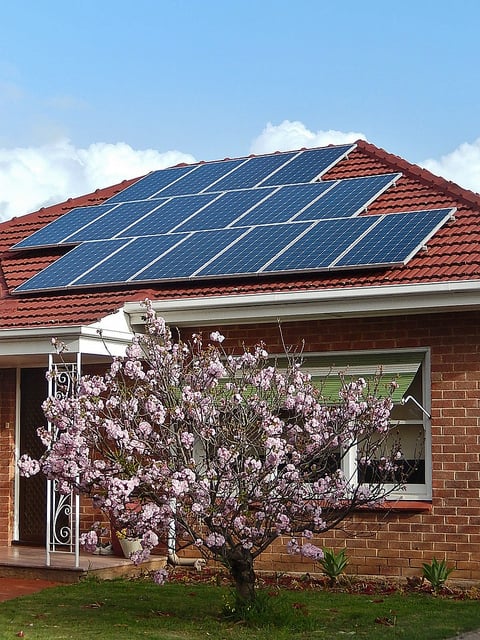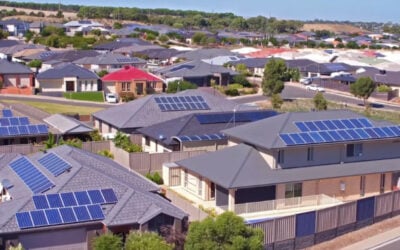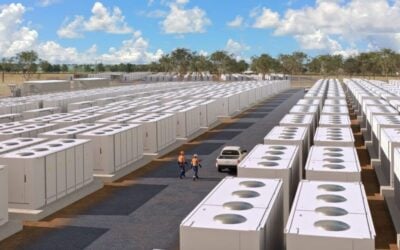
Members of the public in South Australia are being given the chance to participate in creating the biggest ‘virtual power plant’ of solar PV and batteries the world has ever seen.
Virtual power plants (VPP) take the capabilities of several home or commercial solar-plus-storage systems and aggregate them together to form a bigger grid or capacity resource than would otherwise be possible.
Enjoy 12 months of exclusive analysis
- Regular insight and analysis of the industry’s biggest developments
- In-depth interviews with the industry’s leading figures
- Annual digital subscription to the PV Tech Power journal
- Discounts on Solar Media’s portfolio of events, in-person and virtual
Starting with 600 homes this year, South Australia’s government wants to install “up to” 50,000 solar and battery storage systems in the region and connect them to form a VPP, storage system supplier Tesla confirmed in a statement to Energy-Storage.News this morning.
“When the South Australian Government invited submissions for innovation in renewables and storage, Tesla’s proposal to create a virtual power plant with 250MW of solar energy and 650MWh of battery storage was successful,” the spokesperson said.
The project begins on a trial basis, with each home to be fitted with 5kW of solar PV and a 13.5kWh Tesla Powerwall 2 battery system. Jay Weatherill, premier of the state of South Australia, issued his own statement which said the project would be paid for through electricity sales and that households would not be charged for taking part.
Initially, 1,100 homes overseen by the state Housing Trust will be equipped, before installations at a further 24,000 of the Trust’s properties, before the plant is rolled out over the next four years to include “at least” 50,000 households, Weatherill’s office said. Analysis by consultancy Frontier Economics found the 250MW solar plant could lower consumer bills by 30%, while deploying solar could lock in savings and price stability for customers over a number of years.
The VPP, part of South Australia’s Energy Plan, will receive a AU$2 million (US$1.6 million) state government grant and a AU$30 million loan from the state’s AU$150 million Renewable Technology Fund, which assists investment in clean energy and demand management. The state government has opened the VPP up to registrations of interest from members of the public – while also planning to issue a market notice later this week to find a retailer to roll out the programme.
While Weatherill and energy minister Tom Koutsantonis touted the increased efficiency of South Australia’s network as a consequence of the VPP project, lowered electricity prices and increased competitiveness for renewable energy, social housing minister Zoe Bettison also said the “initiative could take some pressure off the household budget” for people in social housing struggling to make ends meet.
The project follows the completion of Tesla’s 129MWh grid-scale battery in the state, while the company has also begun rollout of destination chargers for its EVs in the region. In terms of virtual power plant development, it appears to be at the early stages around the world. The biggest to date is the 250-home installation switched on about two months ago in Canberra, Australia’s capital, while others have been deployed in regions including Canada, the UK and more recently, Japan. If the early trial phase is a success, Tesla’s South Australia project will easily eclipse other efforts to date. Navigating a different strategy into the same regional market, German storage manufacturer Sonnen is offering a plan called SonnenFlat, where households sign up to pay a monthly ‘flat rate’ for power while their batteries are used to benefit the local grid, aiming to win over about 2,000 utility customers this year.
“A virtual power plant utilises Tesla Powerwall batteries to store energy collectively from thousands of homes with solar panels. At key moments, the virtual power plant could provide as much capacity as a large gas turbine or coal power plant,” the Tesla spokesperson said.
“Residents will enjoy lower bills and backup storage from their Tesla Powerwall battery, and the broader community will benefit from a more reliable grid that can better cope with peak demand.”
BREAKING: My Government has already delivered the world’s biggest battery. Now, we’re delivering the world’s largest Virtual Power Plant. #renewables #energy #solar #storage #future pic.twitter.com/0JPAMogPOV
— Jay Weatherill (@JayWeatherill) February 4, 2018






